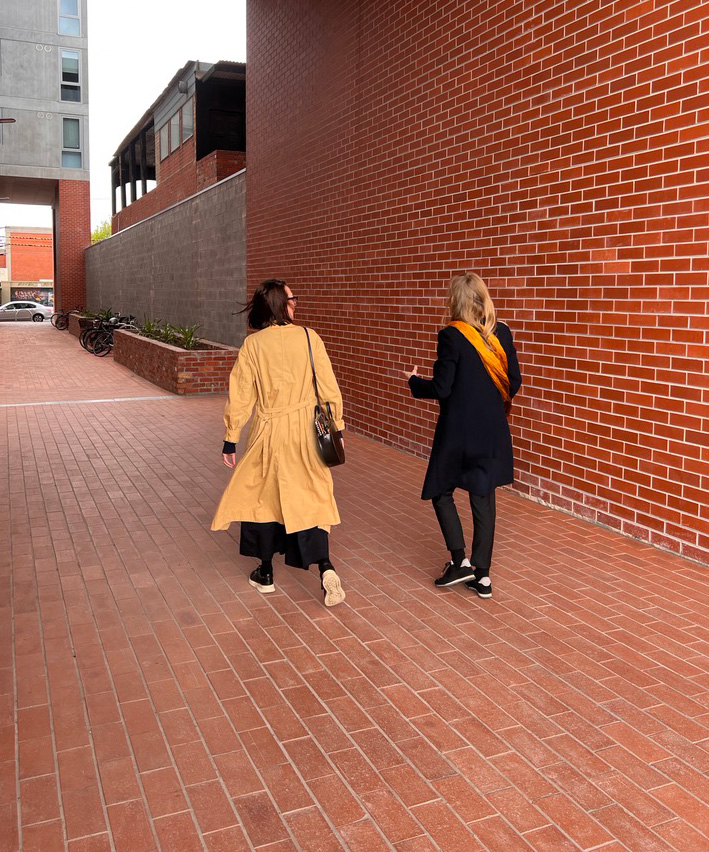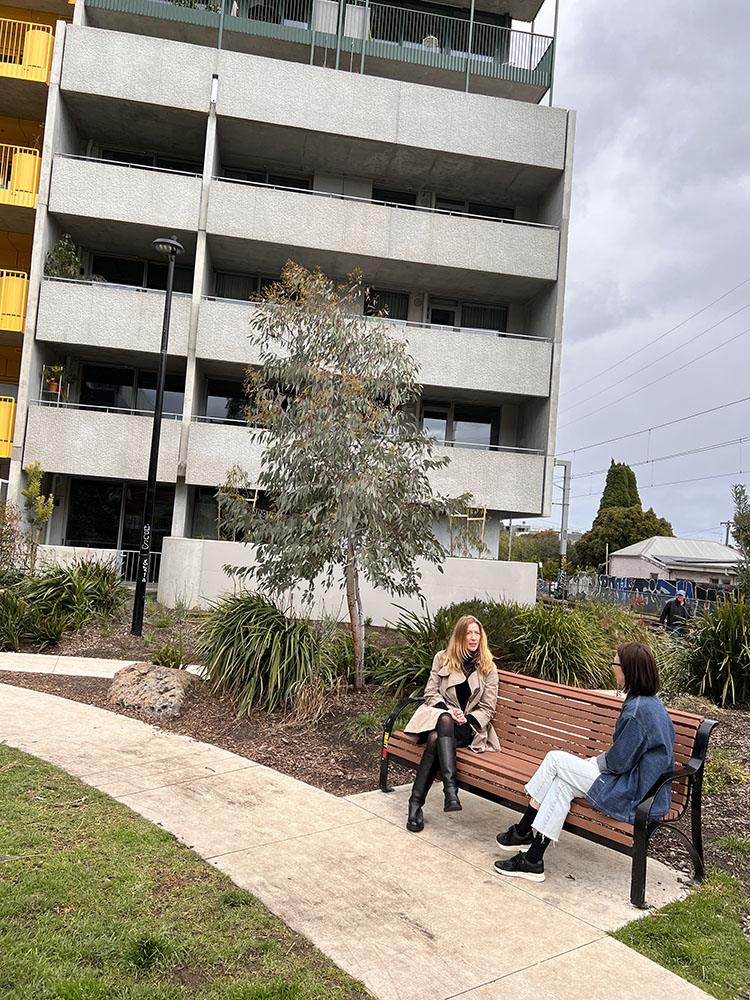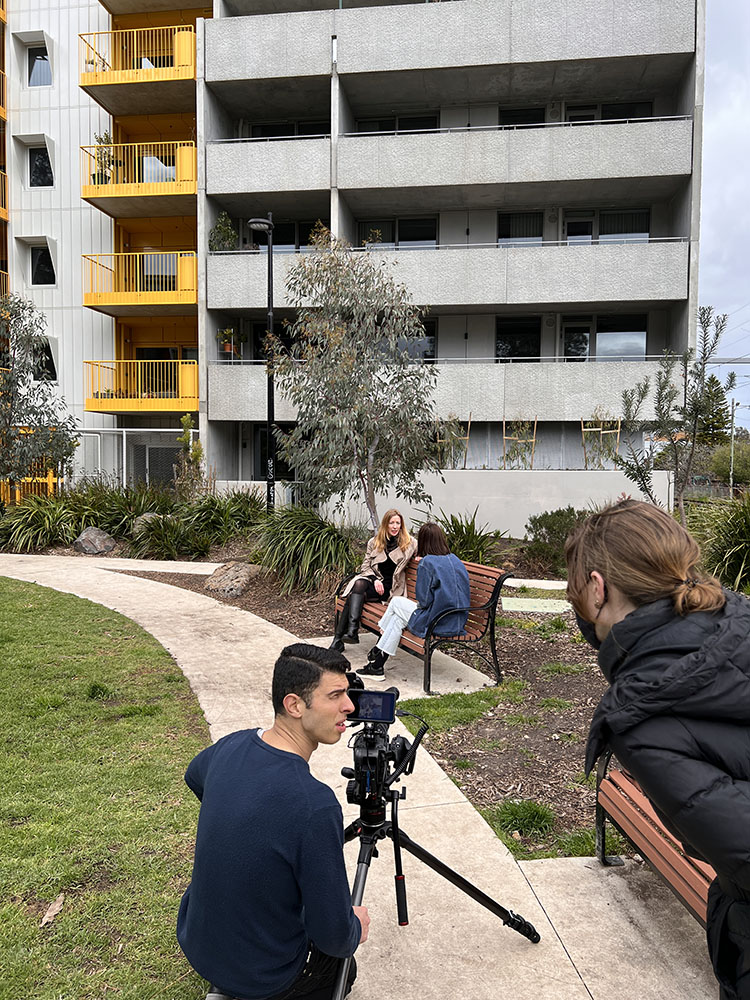Meet the Researcher: Rebecca Roke
Meet one of our researchers, Rebecca Roke. Rebecca is a doctoral researcher in the School of Architecture and Urban Design at RMIT University. We sat down with her to learn more about her research interests and the collaborative Living Together research project.
A site visit to Nightingale Evergreen, Brunswick. Image: RMIT PlaceLab.
“By listening to the lived experience of those on the ground, we can begin to understand what the collective as a whole wants, doesn’t want, and what they are willing to compromise on.”
What has been the focus of your previous research projects?
Most of my research makes a connection to the built environment, and the world of making, drawing on my career as writer and editor and my training as an architect. I enjoy working across different topics and media within that broad spectrum: whether through my books Nanotecture: Tiny Built Things and Mobitecture: Life on the Move, both of which consider the rise of small built footprints – or through the wider consideration of building types – from architectural and design monographs, to analysis of particular movements – Brutalism, for instance.
Why the Living Together project?
The provision of housing continues to be a pressing topic in Australia. It is a fundamental need that can be read in the context of three key concerns: the cost of living, the impacts of a changing climate, and a population that is both ageing and growing. Combined, these pressures mean we need to think carefully about how we live together – and in particular, how we may achieve housing density in the suburbs without sacrificing high quality of life. Living Together forms part of my wider doctoral research into collective housing as a new typology that aims to offer an alternative to the typical Australian duality of a standalone home or speculative apartment.

A site visit to Balfe Park Lane, Brunswick East. Image: RMIT PlaceLab.
“We need to think carefully about how we live together – and in particular, how we may achieve housing density in the suburbs without sacrificing high quality of life.”
How do you hope that Living Together will have impact in the wider community?
Hearing from local residents and learning what they fear and favour about the way housing affects them, their neighbourhood – and the larger, civic scale is an important aspect of this research. By listening to the lived experience of those on the ground, we can begin to understand what the collective as a whole wants, doesn’t want, and what they are willing to compromise on.
Why have you chosen to work with the RMIT PlaceLab team for Living Together?
My research focus shares some productive overlaps with the aims of RMIT PlaceLab. In particular, the four housing case studies that form part of my research project are located in the Brunswick suburb. RMIT PlaceLab offers a terrific opportunity to explore this connection to place – Brunswick – more closely, and to gain a more broad understanding ‘on the ground’ of how densification, and particularly collective housing, is perceived by the community.

